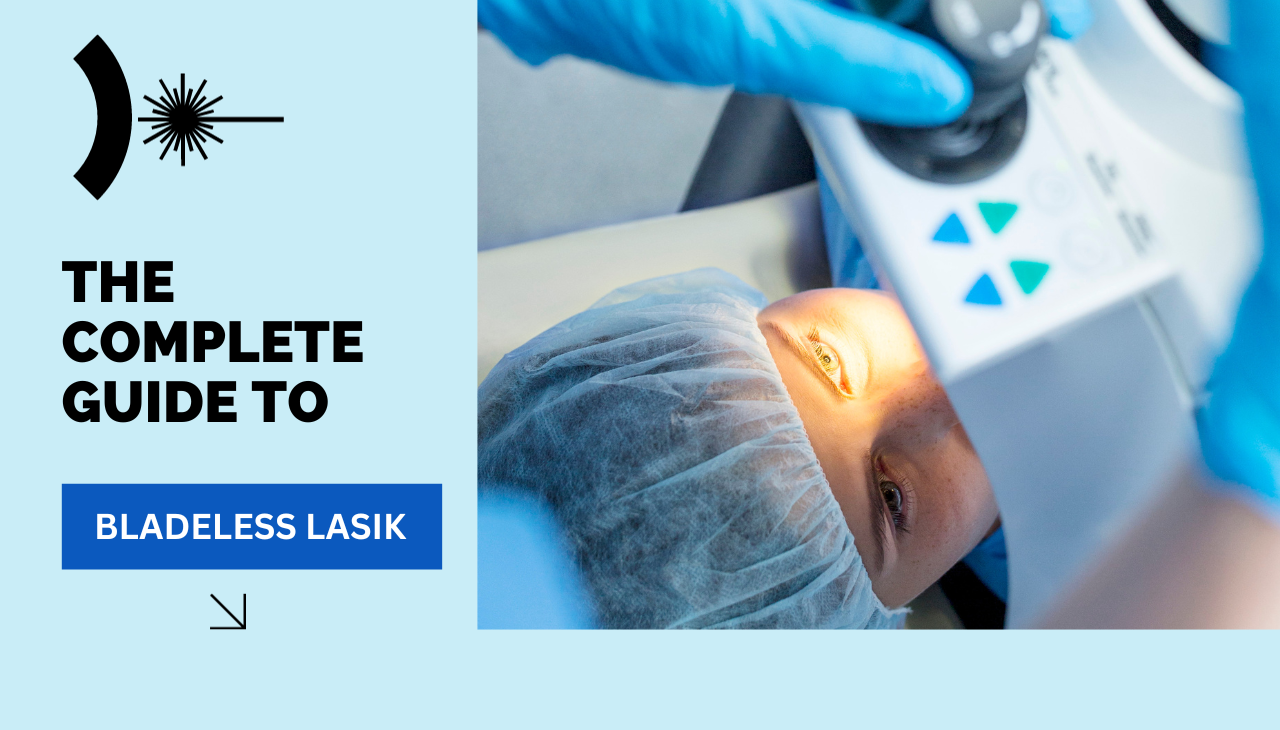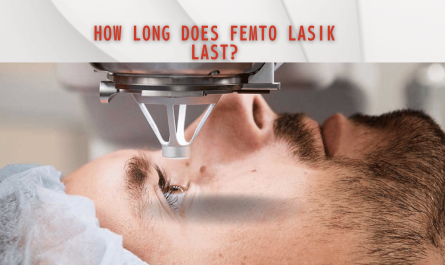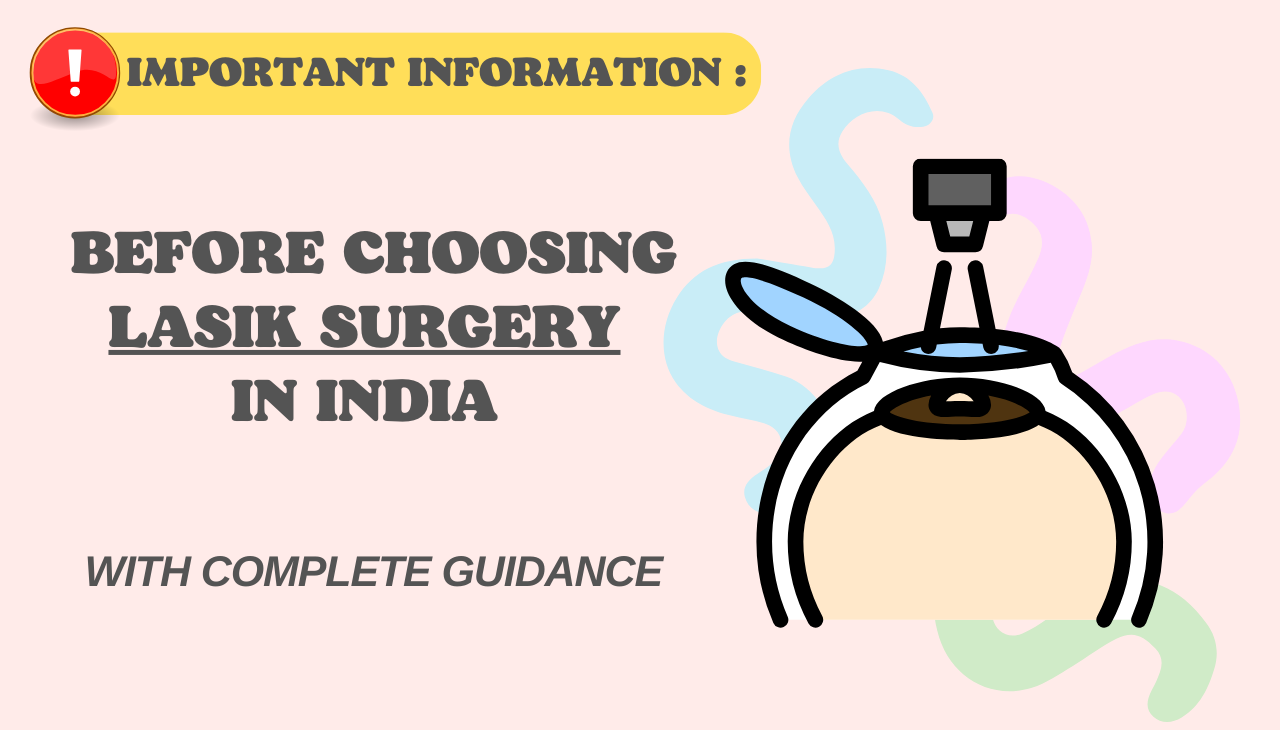Laser-Assisted In Situ Keratomileusis or LASIK, has revolutionized the world of vision correction. It’s a surgical procedure that aims to correct refractive vision problems,like nearsightedness, farsightedness, and astigmatism. Traditional LASIK procedures involve the use of a microkeratome, a small blade, to create a corneal flap. However, in recent years, bladeless LASIK has gained popularity as a safer and more precise alternative. Now, let us know more about bladeless LASIK surgery.
Understanding LASIK
Before going into details about bladeless LASIK, it’s important to understand the basics of the LASIK procedure itself. LASIK is an ophthalmology procedure designed to reshape the cornea to improve the way it focuses light onto the retina.
The LASIK procedure involves two main steps:
- The first step in LASIK surgery is the creation of corneal flap. This step is performed using a microkeratome, an instrument with a small blade.
- The second step is the reshaping of the cornea. An excimer laser is used to remove a precise amount of tissue to reshape the cornea according to the patient’s requirement and prescription.
Bladeless LASIK, also known as all-laser LASIK, focuses on the first step—creating the corneal flap—without the use of a blade. Instead, it depends on advanced laser technology for a safer and more precise flap creation process.
The Advantages of Bladeless LASIK
- One of the key advantages of bladeless LASIK is the higher level of precision it offers. The use of a laser to create the corneal flap allows for greater accuracy in shaping the flap. This results in better visual outcomes and reduced risk of complications.
- Traditional LASIK procedures using a microkeratome blade carry a small risk of complications related to the blade itself, such as irregular flap creation or uneven edges. Bladeless LASIK eliminates these risks, enhancing the overall safety of the procedure.
- Patients often report less discomfort and quicker recovery times with bladeless LASIK.
- Bladeless LASIK allows for customizing the flap size, shape, and thickness to each patient’s unique eye anatomy. This level of customization enhances the predictability of the procedure’s outcomes.
- Dry eye syndrome is a common side effect of LASIK. Reports say that Bladeless LASIK has resulted in less occurrence of dry eye syndrome.
The Bladeless LASIK Procedure

Bladeless LASIK involves several steps, from pre-operative evaluation to post-operative care:
- Pre-operative Evaluation:
Before undergoing this LASIK, you will have a physical eye examination to determine your candidacy for the procedure. This evaluation includes measuring your refractive error, evaluating your corneal thickness, and assessing the overall health of your eyes.
In the this LASIK procedure, the corneal flap is created using a femtosecond laser. This laser emits ultra-short pulses of light that create a precise flap without the need for a blade. The surgeon programs the laser to create a flap of a specific size and thickness, tailored to your eye’s unique characteristics.
- Corneal Reshaping:
After the flap is created, an excimer laser, which reshapes the cornea to correct your refractive error will be used. This step is also computer-controlled and highly precise, ensuring that the cornea is reshaped to the desired requirement.
- Flap Replacement:
Once the corneal reshaping is complete, the surgeon gently repositions the corneal flap, where it adheres or sticks without the need for stitches. The flap quickly starts healing.
- Post-operative Care:
Following the procedure, you will receive instructions for post-operative care and medication to reduce the risk of infection and inflammation.
Not everyone is a suitable candidate for LASIK. Eligibility depends on several factors, including:
Eligibility for Bladeless LASIK
- Candidates should have a stable refractive error prescription for at least a year before considering LASIK.
- The cornea should be thick enough to accommodate the creation of a corneal flap and reshaping.
- Candidates should have healthy eyes without any conditions that could complicate the procedure or healing process.
- Bladeless LASIK is typically recommended for adults, as the prescription stability of younger individuals may still be changing.
A thorough consultation with an experienced LASIK surgeon is essential to determine whether bladeless LASIK is the right choice for you.
Potential Risks and Side Effects of LASIK
While bladeless LASIK is considered safe and effective, like any surgery, it carries some risks and side effects. These may include:
- Some patients may experience dry eye symptoms temporarily after LASIK, but these usually resolve within a few months.
- While bladeless LASIK reduces the risk of flap-related issues, there is still a slight possibility of flap displacement or complications, although they are rare.
- In some cases, the procedure may not achieve the desired level of correction, leading to under-correction or overcorrection. Enhancement procedures can address these issues.
- Some patients may experience halos, glare, or starbursts around lights, especially at night. These symptoms typically go away over time.
- Although rare, infections or inflammation can occur after LASIK. Strict adherence to post-operative care and medication is crucial in preventing these complications.
Conclusion
Bladeless LASIK at Laxmi Eye Hospital represents a remarkable stride in vision correction surgery. The heightened precision, lowered risk of complications, and increased patient comfort have catapulted it to the forefront of choices. Yet, it’s crucial to schedule a consultation with our seasoned LASIK surgeon to gauge your candidacy and explore tailored treatment options for your unique vision requirements. With our adept team of professionals, bladeless LASIK has the potential to be a transformative experience, elevating your quality of life by delivering crystal-clear vision.




